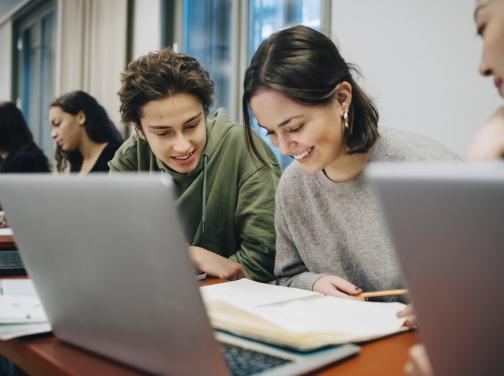Instructions
Do the preparation task first. Then watch the video and do the exercises. Remember you can read the transcript at any time.
Transcript
This is Southall Broadway in West London. This area has one of the largest Asian populations in London. The United Kingdom is an ethnically diverse country with many different communities that reflects the multicultural nature of Britain. Many British people’s families originally come from overseas. Over the centuries, people from around the world have come to live here.
The first significant wave of immigrants arrived by ship from Jamaica in 1948. The Notting Hill Carnival celebrates this Caribbean culture.
In the 1950s and 60s, Indian, Bangladeshi and Pakistani families made Britain their home. Asian Ugandan refugees fled here in the 1970s. Followed by Somalis in the 90s. And in recent years, Eastern European citizens have arrived in search of work.
This cultural variety makes Britain a vibrant place to be, but it’s not without its problems. Conflicts can arise between cultures and generations. Young people whose parents or grandparents settled here have a very different experience of growing up to their parents.
...
Sunny Grewel and his father Avinda live in Southall. Avinda came here from Kenya in the 70s. Sunny was born here.
Nick: Avinda, what was life like when you first came here?
Avinda: It was hard. There was no jobs for, for people like us.
Nick: And what’s life like now, for young people, Sunny?
Sunny: I think we’re very much a part of the communities and government and everything, so it’s a lot more equal for everyone.
Nick: What are the main arguments between the younger and older generations?
Avinda: When they were small, I wouldn’t let him wear these earrings and have a long ponytail. They have to look smart.
Nick: And what’s the best thing about living here, Sunny?
Sunny: The food, the different cultures that come in and bring their spices, their experiences and even their rituals, so you get a taste of the world within this small community.
...
In the past, differences between communities have led to violence. But new community-based projects have brought different generations and cultures together.
Here at St Mary’s School in Cardiff in Wales, more than 20 languages are spoken. It’s one of the most multicultural schools in Wales. The school was involved with a project called 'Open Cities'. It helps migrants, people from other countries, become part of the community. The schoolchildren took pictures of people and places to show what it's like to live in Cardiff.
Some of the kids are featured in an exhibition called Open Cities Faces.
...
Mercy and Joy and their father Derek are originally from Zambia. They have lived here for six years.
Nick: Derek, tell me why you came to Cardiff and why you took part in this project.
Derek: I am an Engineering Consultant. I came to Cardiff because I was offered a job here. This project was a good thing because it was trying to show something positive about migration and integration.
Nick: Why is Mercy photographed by a window?
Derek: Because the photographer wanted to find a way to show the hopes for our future – the better life that we look towards.
Nick: But there’s a lot of shadow in that photograph, as well.
Derek: Yes, the shadow is deliberate to try to show our past, where we’ve come from.
Nick: And do you consider Cardiff to be your home now?
Derek: Yes. We are part of the local community, we have settled down and we think Cardiff is great.
Projects like ‘Open Cities’ can bring people in the community together and give young people hope for the future.
How many different languages do students at your school speak? Do you speak different languages at home and at school?

Comments